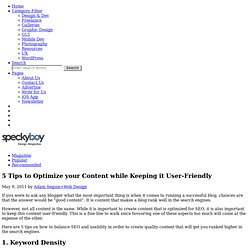

Content Strategies. So you want some content.

Are you a solo blogger impatient to get to a thousand page views a day? Are you an advertising agency and on hearing your client’s content needs realize you can’t possibly fulfill their expectations with your already-stretched staff? Or are you a major corporate and you realize it’s time to “get to scale.” You need a content strategy now. One-size-fits-all doesn’t work here. What business are you in? A good content strategy works backwards from your business goal. “Common problems for sites include a lousy user experience (UX), confusing navigation, and bad content.”
Content comes in many forms. Again work backwards: Think of what the consumer of the content needs to know when on a specific page of your site or app and supply them that content in the best possible way. “Animation, transitions, and graphical interfaces play a larger part in this new app-driven world.” Content strategy, content marketing and the name game « Laura Creekmore.
I had to laugh this morning when I saw this tweet from UX champion Jared Spool: Ah, the Content Strategy community has now caught the Define The Damn Thing virus.

#DTDT #ContentStrategy The situation has been circling for months, and it’s finally caught us. Guilty. We are engaged in a fight about what we are talking about. Let me be clear up front that I find the discussion useful and unimportant: Useful to help our discipline better define itself and better educate prospective clients [customers, our boss, the CFO, whoever] about the need for content strategy, not altogether important in that much of this dialogue is about our internal terminology, and we’ll never fully convince the people who sign our checks to use the terms we like.
In the past couple of weeks, I’ve read a couple of thought-provoking posts from Lise Janody and Ian Alexander, and I’ve been following the great conversation on the content strategy Google Group. Here’s how I approach content strategy: How to Squeeze the Most out of Your Content. We all know the virtues of great content and just what it can do for you, your site and your traffic.

If the content you create can keep attracting visitors long after it has been published then you have cracked the secrets to creating evergreen content. In this article we talk about how you can get the most out of the posts and articles you write. Re-purposing your articles comes in many differ forms but here are some of the most common. Guest Posting: Reproducing your original articles in the form of Guest posts is a great way to build links and drive traffic. By writing a short extract that gives the readers a taste of what they can expect if they click through to your site will help to increase traffic and build your own following. Power Points: Taking the key elements of each post why not build a set of power points that can then be added to the countless directories like Scribd and Slideshare.
5 Tips to Optimize your Content while Keeping it User-Friendly. If you were to ask any blogger what the most important thing is when it comes to running a successful blog, chances are that the answer would be “good content”.

It is content that makes a blog rank well in the search engines. However, not all content is the same. While it is important to create content that is optimized for SEO, it is also important to keep this content user-friendly. This is a fine line to walk since favouring one of these aspects too much will come at the expense of the other. Here are 5 tips on how to balance SEO and usability in order to create quality content that will get you ranked higher in the search engines. 1. The term “keyword density” refers to how often a specific keyword appears on a page. One way to slip in some extra keywords and increase the density by a percentage point is by adding them to your header tags.
Image Source: Neshachan → 2. In order to be optimized for SEO, the minimum length of page content is 250 words. 3. 4. 5. Final Words.